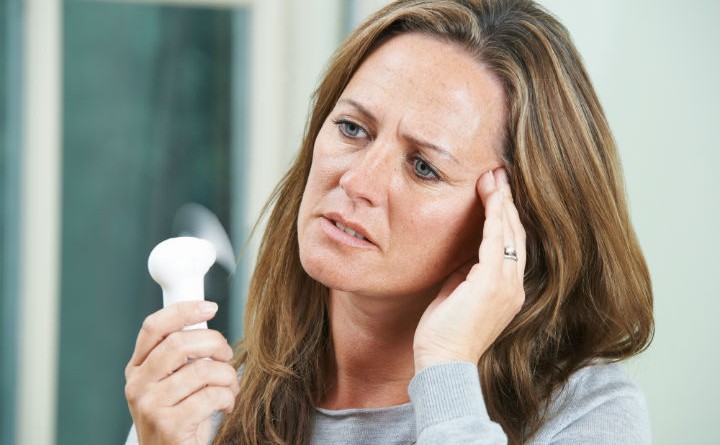Hot flashes are sudden feelings of feverish heat that occur usually in the face, neck, and chest. Hot flashes are one of the most common symptoms for women who are going through menopause.
Hot Flash Symptoms
The frequency of hot flash symptoms can vary from a couple of times a week to a several times a day, but they will usually only last for a few minutes. Most women who experience hot flashes during menopause will have them for at least a year, but the hot flashes will usually subside after four or five. Hot flashes are particularly common at night. Symptoms include:
- A sudden feeling of warmth in your upper body and face.
- Looking red, flushed, and sometimes blotchy.
- Perspiration throughout the upper body.
- Feeling chilled as soon as the hot flash is over.
Hot Flash Causes
Though the exact cause of hot flashes is not yet determined, they are believed to be related to a change in reproductive hormones during menopause. Hot flashes are also thought to be caused by a change in the hypothalamus, which is the part of the brain that regulates your body’s temperature that can make you more sensitive to slight changes in body temperature.
Hot Flash Diagnosis
If you start to experience the symptoms of hot flashes, this could mean that your body is going into menopause. If your hot flashes start to become particularly bothersome, it might be worthwhile to make an appointment with your doctor to discuss possible treatment options. Your doctor will likely be able to diagnose hot flashes with just a simple description of your symptoms. To confirm the cause of your hot flashes, your doctor will likely order blood tests in order to determine whether or not your body is going into menopausal transition.
Hot Flash Treatments
There are many different medications that can help to relieve the symptoms of hot flashes. However, many medications come with side effects and increase your risk for developing other health problems. If the hot flashes are not severely interfering with your life, you may choose not to undergo any treatment plan at all. The most common types of medications prescribed include:
- Hormones: The most effective way to reduce hot flashes is to take estrogen and progesterone supplements, which are the hormones that are most affected when your body is going through menopause. However, taking estrogen is linked with an increased risk of certain types of cancer.
- Antidepressants: Low doses of antidepressants such as venlafaxine, paroxetine, and fluoxetine can also help to reduce the occurrence of hot flashes. Antidepressants aren’t as effective as hormone therapy, but they are a good alternative if you don’t want to use hormones for any reason. Side effects of antidepressants include headache, fatigue, nausea, dizziness, weight gain, dry mouth, sexual dysfunction, and thoughts of suicide.
- Gabapentin: This is a medication that is used to prevent seizures, but it has also proven to be moderately effective at reducing hot flashes as well. Some possible side effects include drowsiness, dizziness, and headaches.
- Clonidine: This is a medication that is usually used to treat high blood pressure, but it also works to provide relief for hot flashes. Side effects may include dizziness, drowsiness, dry mouth, and constipation.
Featured Image Source: DepositPhotos / © HighwayStarz




